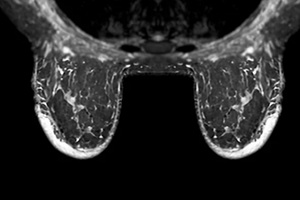 When you come in for breast cancer screening, your mammogram (or breast imaging study) generates more than just pictures. It produces a report with a Breast Imaging-Reporting and Data System (BI-RADS) score. It’s a classification system developed by the American College of Radiology to standardize how radiologists describe breast imaging findings and help determine future care.
When you come in for breast cancer screening, your mammogram (or breast imaging study) generates more than just pictures. It produces a report with a Breast Imaging-Reporting and Data System (BI-RADS) score. It’s a classification system developed by the American College of Radiology to standardize how radiologists describe breast imaging findings and help determine future care.
It’s natural to feel worried or anxious when you see unfamiliar terms in your report. Know that your provider will walk you through what a BI-RADS score means, how the categories differ, and how you and your care team can use these results to determine the best course of action.
How the BI-RADS System Works
- The BI-RADS system assigns a number from 0 to 6 as well as a breast density code to indicate how confident the radiologist is that a finding is benign or suspicious.
- BI-RADS 0: Incomplete – more imaging or comparison films are needed
- BI-RADS 1: Negative – everything looks normal
- BI-RADS 2: Benign finding – something benign, such as a cyst or calcification
- BI-RADS 3: Probably benign- very low likelihood of cancer (typically < 2%)
- BI-RADS 4: Suspicious – biopsy often suggested
o This category is subdivided (4A, 4B, 4C) to reflect increasing levels of concern:
• 4A: Low suspicion (2-9%)
• 4B: Moderate suspicion (10-49%)
• 4C: High suspicion (50-94%)
- BI-RADS 5: Highly suggestive of malignancy (>95%)
- BI-RADS 6: Known biopsy-proven cancer (if the imaging is done after diagnosis)
When multiple findings appear in one study, the final BI-RADS category reported is the one that reflects the highest level of concern.
What Your BI-RADS Report Might Say About You
BI-RADS 0 – More Imaging Needed
If your report says “0,” it doesn’t mean there’s an emergency. It means the imaging was inconclusive, sometimes due to breast density, overlapping tissue, or technical factors that made interpretation difficult.
One study found that over half (55.9%) of screening mammograms in a single center were initially classified as BI-RADS 0, triggering follow-up imaging. In a case such as this, additional views, ultrasound, or other diagnostic imaging is recommended.
BI-RADS 1 or 2 – Normal or Benign
 These are reassuring classifications. BI-RADS 1 means no suspicious findings; BI-RADS 2 means there is a benign (noncancerous) feature such as a stable cyst or benign calcification.
These are reassuring classifications. BI-RADS 1 means no suspicious findings; BI-RADS 2 means there is a benign (noncancerous) feature such as a stable cyst or benign calcification.
In many mammography series, about 57% of reports are BI-RADS 1, and 20-21% are BI-RADS 2. These categories typically call for routine screenings at intervals recommended by your health provider.
BI-RADS 3 – Probably Benign, But Watch Closely
When a finding is likely benign (less than 2% chance of malignancy), a BI-RADS 3 may be assigned. Instead of a biopsy right away, the recommendation is often short-term follow-up imaging (for example, every 6 months for 1–2 years). If there’s no change, the rating can be downgraded.
However, the cancer rate for BI-RADS 3 findings can rise slightly with age. One study found that in a group of over 43,000 women, the malignancy rate crossed 2% for ages above 59.7 years in some settings.
BI-RADS 4 – Suspicious (Biopsy Likely Advised)
When imaging raises concern, but doesn’t definitively point to cancer, BI-RADS 4 is used. Because the range is wide (2% to 95% likelihood), it’s further broken down into 4A, 4B, and 4C. A biopsy is often recommended so a tissue diagnosis can be made.
BI-RADS 5 or 6 – Strong Findings
BI-RADS 5 means the imaging is highly suggestive of cancer (over 95% probability).
BI-RADS 6 is used when cancer has already been confirmed by biopsy, and the imaging is matched to that known diagnosis.
What You Should Do After Getting a BI-RADS Report
- Talk with your provider. We will walk through your imaging result, your personal risk factors, and what fits best for you (whether more imaging, a biopsy, or simply continued screening).
 Stay on schedule. If the report calls for follow-up imaging (for BI-RADS 0 or 3), showing up for these appointments as scheduled prevents delays.
Stay on schedule. If the report calls for follow-up imaging (for BI-RADS 0 or 3), showing up for these appointments as scheduled prevents delays.- Ask questions. If you’re still not clear about the results of your report, please contact your provider to ask questions or discuss your concerns.
Get the Support You Deserve
Your BI-RADS score is a tool, a standardized way for radiologists and your care team to speak the same language, guide decisions, and track changes over time.
If you’ve recently had a mammogram and received a BI-RADS score that’s confusing or worrying, please reach out to our team at Raleigh Gynecology & Wellness. We’d be happy to sit down with you, explain what your report means personally, and support whatever next steps make sense for your health.
